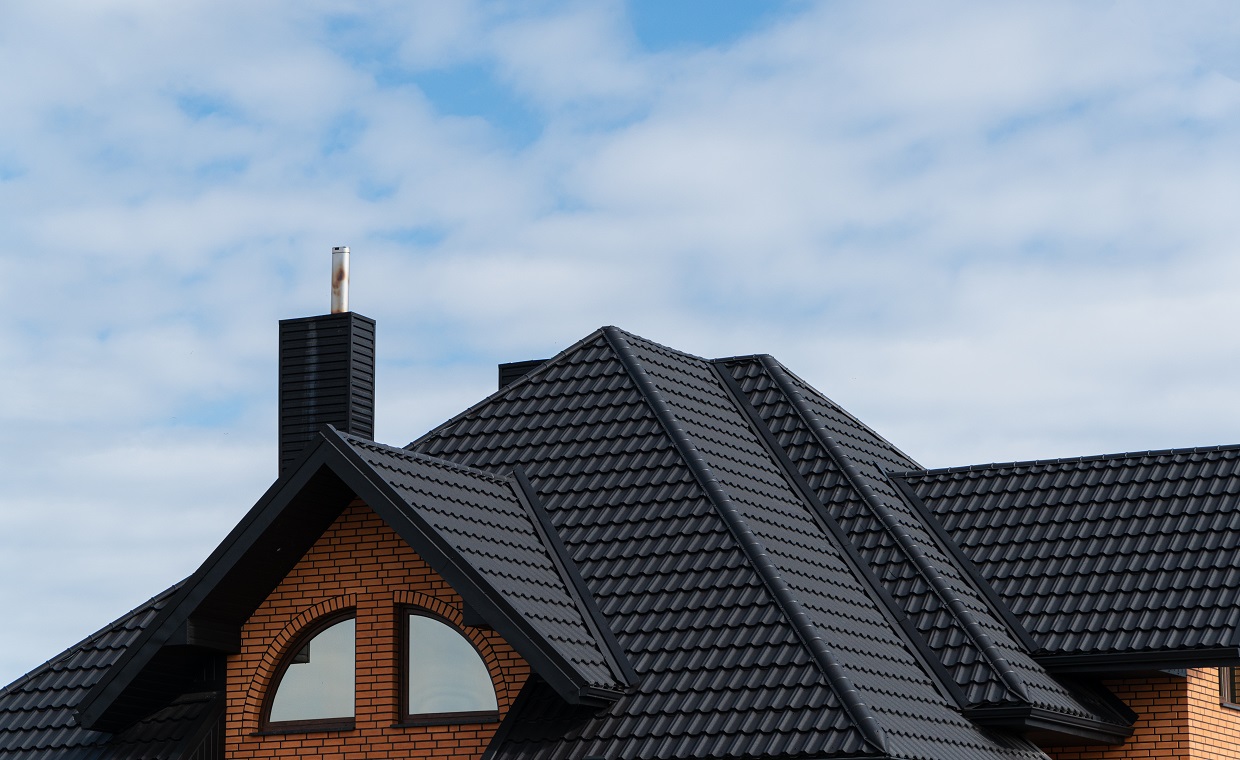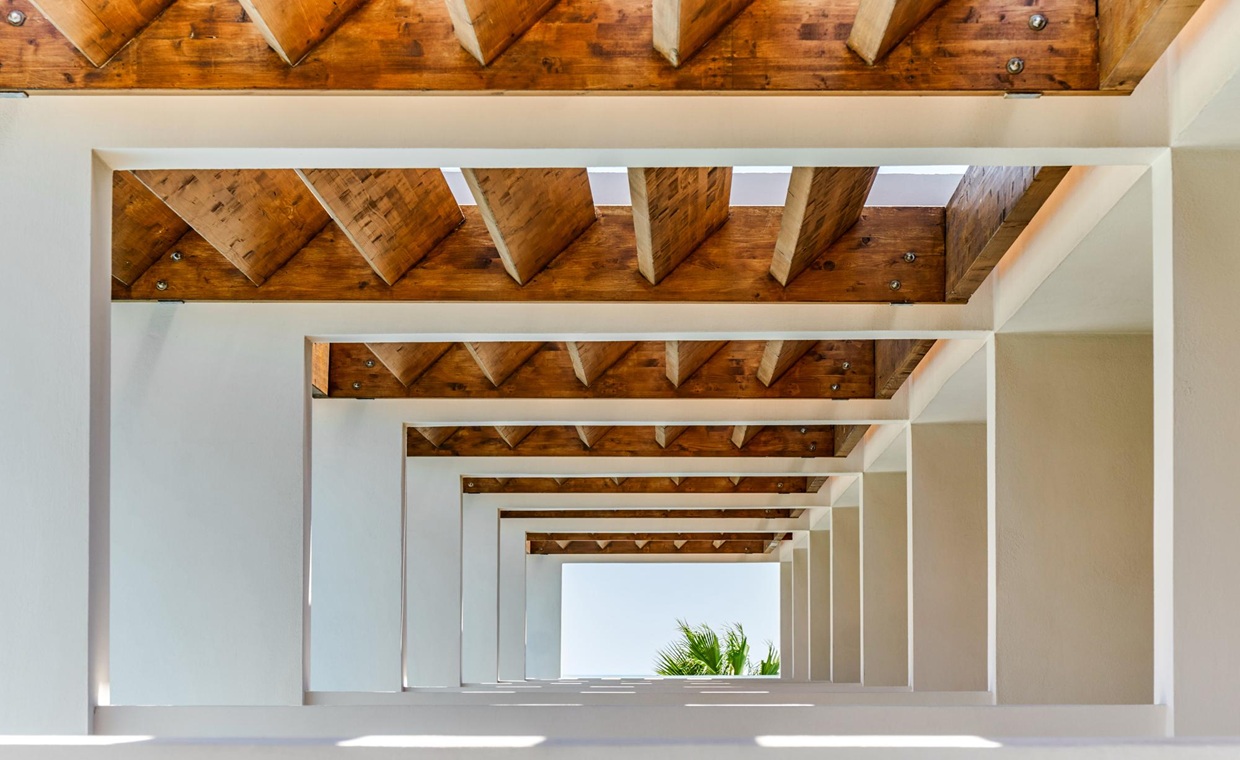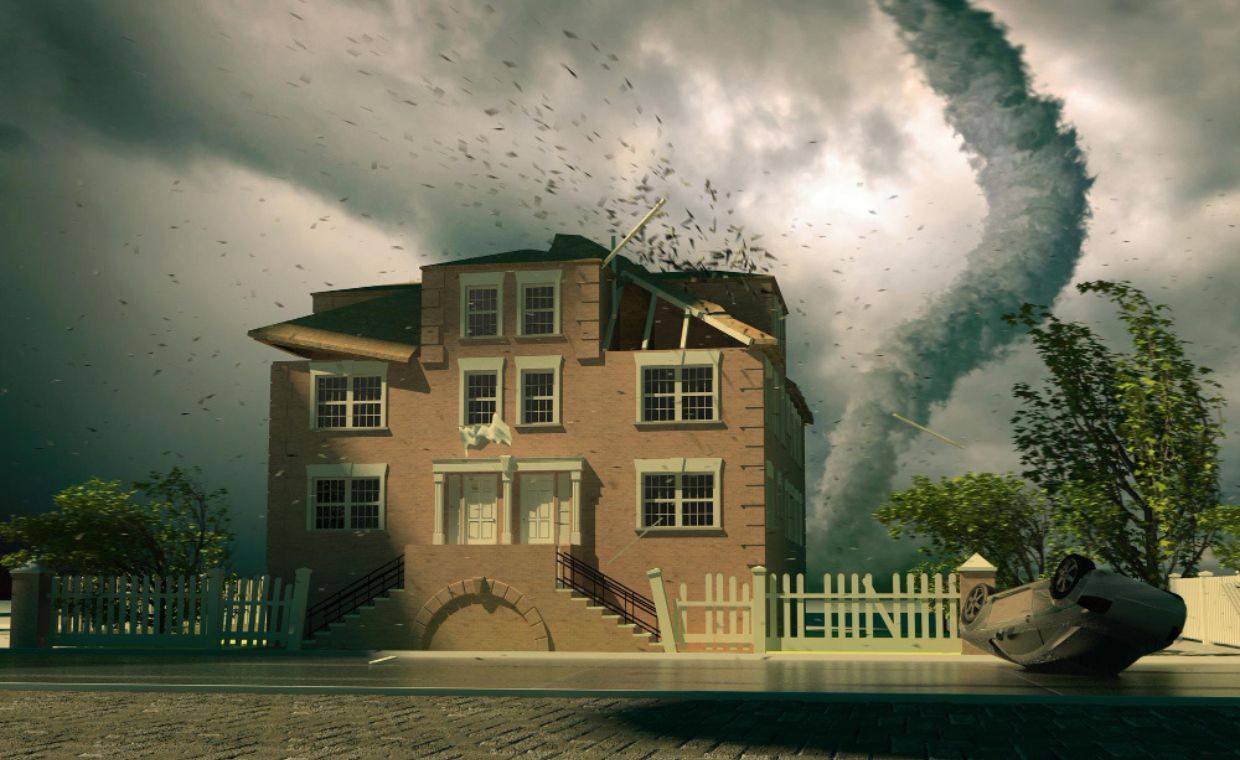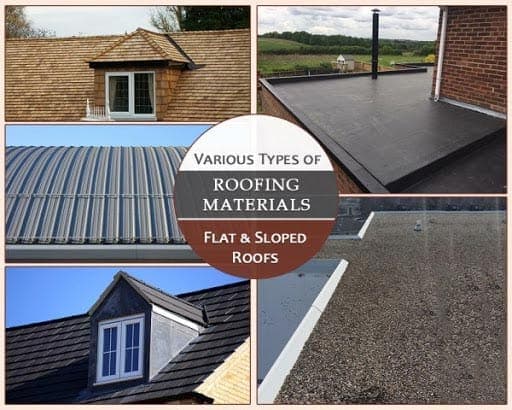
Roof life is the most crucial consideration when selecting roofing material because it determines the roof longevity. The roof is a hefty investment; its durability ensures good recovery of the amount invested. Untimely roof replacement is the last thing that homeowners would consider, and only roofing experts like the ones you find at Patriot Roofing & Construction can evaluate whether it is at all necessary. Instead of replacing the roof, there are many ways to restore it, which are more cost-effective solutions and works well. Repairing the roof will ensure that the roof lasts its full life and defers the replacement.
If you must replace the roof, then instead of sticking to the old roofing material, you can think about using something new that enhances the performance or better suits your budget. It would require gathering information about different types of roofing materials and even understanding the style and architecture of the building that influences the selection. The color and style of the roofing material must match with the overall architecture of the building. Asphalt shingles are the most versatile and affordable roofing material that matches with almost all kinds of architecture and style. However, ranch and cottage style buildings would require a different type of roofing material that goes well with the Mediterranean and European style of buildings. Again, the roofing material for bungalow-style buildings will be quite different from that of buildings constructed in the lines of French style.
Which Roofing Material is Right for You?
Protecting buildings from the vagaries of weather is the primary purpose of roofs that must have an effective system for draining water, and the roofing material contributes to its performance. Built-up roofs made from tar and gravel have excellent water-resisting properties, but newer materials like thermoplastics can also be perfect for flat roofs. Sloped roofs with a pitch or gradient not more than 3 in 12 are suited for using roll roofing, metal sheet roofing tar and gravel roofing. To install shingles or tiles on the roof, the slope must be at least 4 in 12 or higher to ensure the effective draining of rainwater.
You can cover the roof with the material that matches your style and budget and customize it for your needs. The options available when selecting the roofing material for flat roofs will become clear on going through this article.
Tar and Gravel Roof
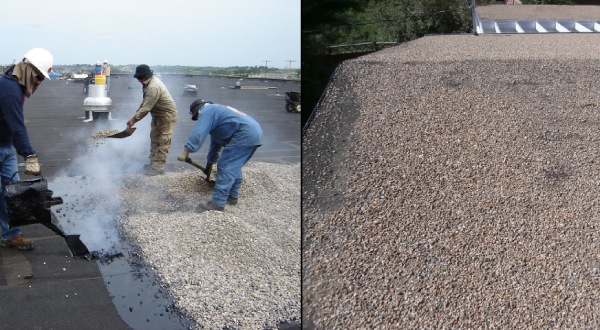
Roofs with pitch up to 3 in 12 are suitable for using tar and gravel roofing material to cover it. The roofing material has several layers of asphalt or hot tar placed alternately together with heavy roofing felt and finished with a topping of mica or gravel that protects the surface. The quality of the roof depends on the number of layers that usually range between 3 and 5.
Modified Bitumen Roof
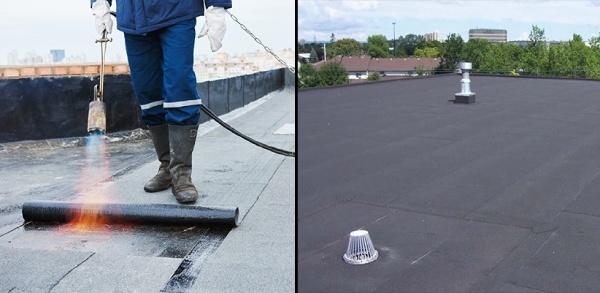
Roofs made from modified bitumen have similar features of tar and gravel roofs but, in addition, has added layers of polyester or fiberglass strengthened with bitumen obtained from tar or asphalt. Multiple layers of the roofing together with polyester membranes add to its strength that helps to withstand the weather conditions. APP or Atactic polypropylene and BSS or Butadiene Styrene is some modifier agents added to bitumen to improve the quality of asphalt roofing.
Roll Roofing
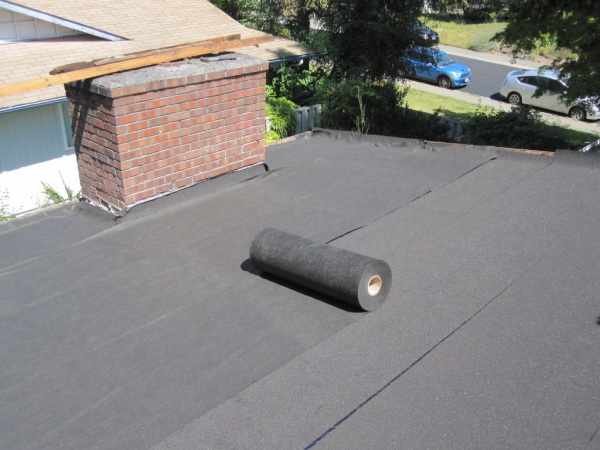
Roll roofing has a limited lifespan and is a low-cost option suitable for sheds and similar structures. The roofing has another name too and popular as 90 pounds felt, which corresponds to the weight of a roll that can cover an area of 100 square feet. A single layer of Asphalt shingles is the chosen material for this type of mineral surfaced roof that lasts just for 10 years.
EPDM Rubber Roofs
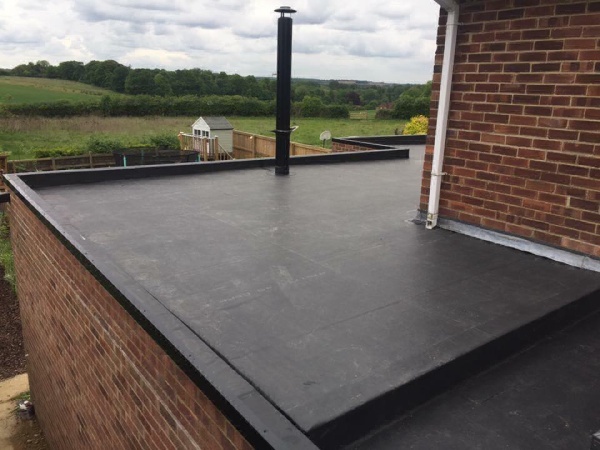
Residential buildings that have flat or low slope roofs are suitable for using EPDM rubber covering. This type of roofing material has been in use for commercial buildings for many years and now gaining popularity for residential buildings too. EPDM is a unique quality rubber known as ethylene propylene diene monomer and used in a single-ply without and mineral coating. The rubber, which is lighter than tar and gravel, has UV resistant properties and available in 45 mm and 60 mm thickness.
According to ‘EPDM association’, EPDM is an extremely durable synthetic rubber roofing membrane (ethylene propylene diene terpolymer) widely used in low-slope buildings in the United States and worldwide. Its two primary ingredients, ethylene and propylene, are derived from oil and natural gas.
Metal Roofs
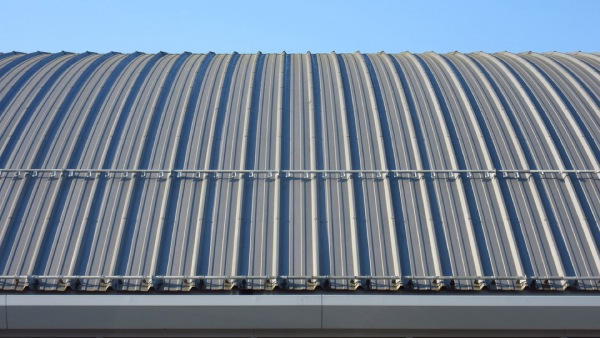
Metal roofs are more durable but lightweight and enjoy wide popularity that keeps growing. The versatility of metals like steel allows builders to create any look for the roof. Buildings in areas that experience bad weather or prone to earthquakes use metal tiles that weigh about a tenth of clay roofs. Metal roofs are available in the form of shingles or panels and last for 30 years on an average.
Pitched or sloped roofs require different types of roofing materials, as discussed below.
We have also written article on patio roofing materials.
Asphalt Shingles

Most sloped roofs have asphalt shingles reinforced with any organic material or fiberglass. Fiberglass impregnation adds more strength to asphalt and is preferred over organic reinforcement because it imparts fireproof properties to asphalt shingles. The pocket-friendly roofing material looks even better by providing a coat of laminate on it.
Wood Shingles and Shake
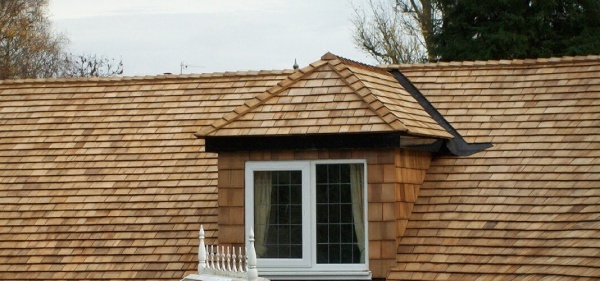
Wood shingles and shakes are the preferred material for installing elegant looking roofs that add a classic appeal to the buildings. Redwood or cedarwood and even southern pine are suitable for making shingles and shakes. Hand sawn shakes are useful for creating rugged looks, but wood shingles are machine sawn. Depending on how well you maintain the roof, it can last 25 years at the most.
Slate
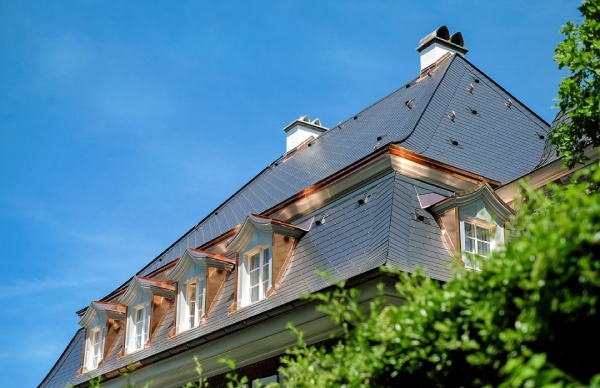
Slate is the best choice for creating classic roofs. Slate is available in many colors and grades and ideal for stylish homes with amazing roof texture that enhances the building aesthetics. Although very costly, slate roofs require low maintenance and last almost for 100 years.
Tile
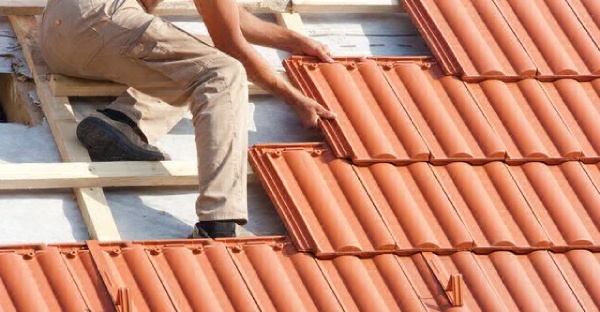
Tiles made from clay or concrete with the latter providing longer life are quite popular. Both types are available in a variety of colors and shapes. Being a weighty and long-lasting roofing material, tiled roofs would require a substantial roof structure.
Consulting a roofing expert will help in the proper selection of roofing material.
Must Read:
What is Couple Close Roof?
What is Couple Roof?
Mud Roof: All You Need to Know
Image Courtesy: Image 1(a), Image 1(b), Image 2(a), Image 2(b), Image 3, Image 4, Image 7, Image 9
Author Bio
Simon Morris – This is Simon Morris, I am a freelance writer. I have written a unique and very interesting article on various categories and currently associated as a blogger with counting sheep.


